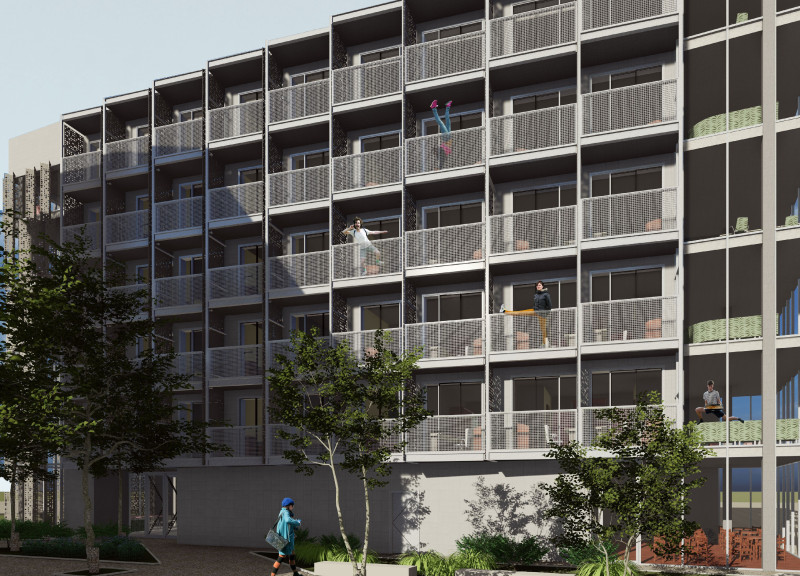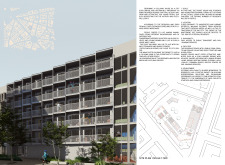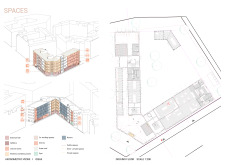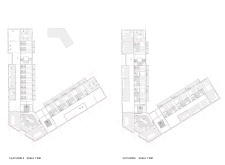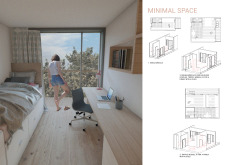5 key facts about this project
The architectural design for a co-living house in Rome aims to meet the needs of young professionals and students, bringing together modern living and the city's rich cultural history. The project accommodates around 50 residents aged 18 to 35, focusing on a balance between shared spaces and private areas, making it suitable for residents who value community while also needing personal space.
Community Dynamics
The emphasis is placed on creating a lively community where residents can socialize and connect. Important shared facilities include co-working areas, a gym, and leisure rooms that support both interaction and solitary activities. This layout promotes a sense of togetherness, helping residents form relationships, which is essential in a co-living setup.
Spatial Organization
The design features a careful arrangement of spaces divided into public, semi-private, and private areas. This organization enhances comfort and usability for residents. Shared kitchens and dining areas are central to social life, encouraging gatherings and conversations among residents. The thoughtful layout strikes a balance between communal engagement and individual privacy, catering to different lifestyle preferences.
Location and Accessibility
Strategically placed near universities and active districts, the co-living house ensures easy access to daily services and public transportation. This prime location supports residents' busy lives, allowing them to engage readily with the city and its amenities. Living here means both convenience and connection to the broader urban setting, enriching daily experiences.
Design Elements
Materials used in the design convey durability and aesthetic appeal. Though specific materials are not detailed, the focus is likely on selections that create a harmonious environment within the historical fabric of Rome. The interior finishes and architectural details aim to foster a cohesive living experience, ensuring that the space is both practical and visually appealing.
Each area within the co-living house is designed to encourage interaction and foster community while offering the retreat of personal living spaces, ensuring that residents can enjoy the best of both worlds.


